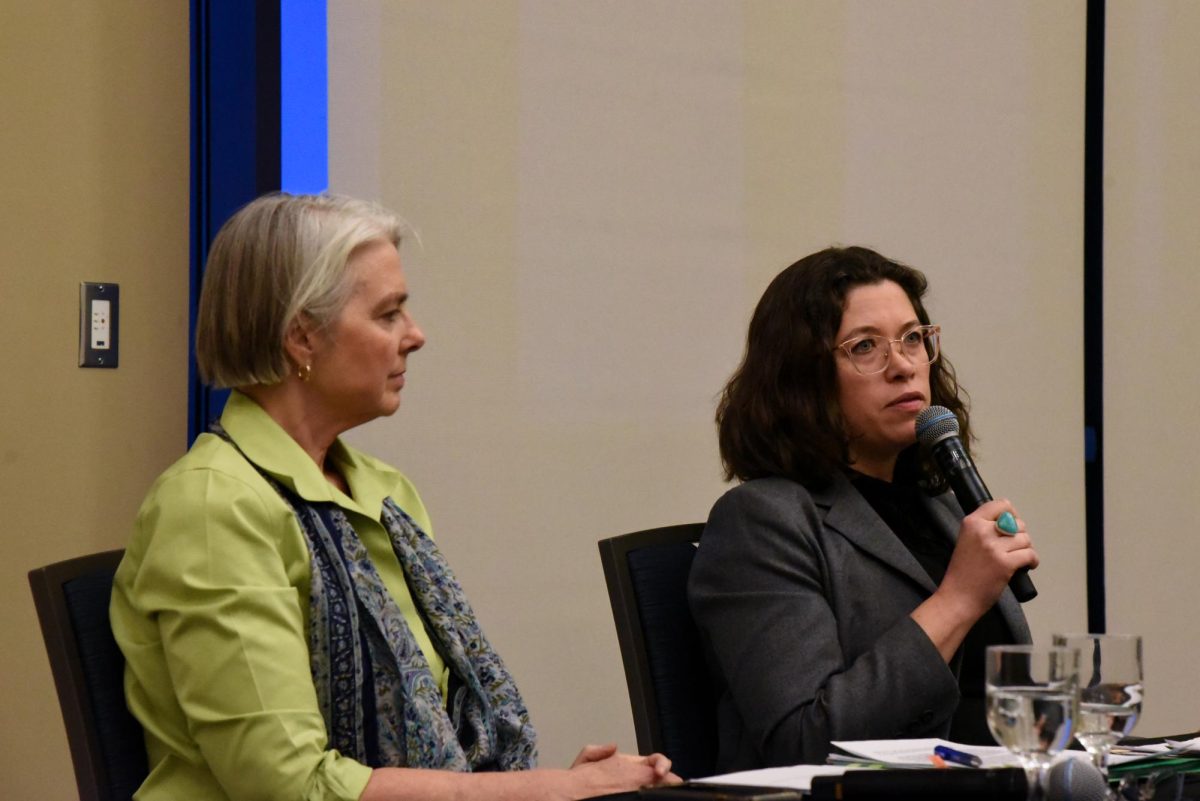Before senior Rebecca Gray and her classmates stepped foot on a 65 acre plot of land donated to the Winooski Valley Park District (WVPD), no one really knew what was there. ?Over time the surrounding land has become very developed but this specific plot of land has not been touched for nearly 50 years,? Gray said. The plot was donated to WVPD with the intention of conserving the natural environment with as little human impact as possible, she said.Through her senior capstone Environmental Problem Solving and Impact Assessment class in the Rubenstein School, Gray said her team was matched with the park district and was responsible for mapping the land.?We were given permission to collect data and assess a large natural area through surveys and observational evaluations, which we were thrilled to do,? Gray said. The class is a way to put what the Rubenstein School students have learned over the past four years to help out the community,? senior Zack Lasky said. ?Throughout our college careers we have been learning what to look for,? Lasky said. ?All the classes we have to take have to do with studying trees, birds, animals and plant management.? A big part of the project was to catalogue everything the team could find throughout the 65 acres, senior Thomas Grist said. ?We would walk transects throughout the plot, do bird surveys, look for wildlife species and inventory the habitat types,? Grist said. Since the group began gathering data, they said they have found birds such as Baltimore orioles, barred owls, eastern phoebes, hairy woodpeckers and red-tailed hawks. ?It is very undisturbed and makes an excellent habitat for many breeding birds like the golden winged warblers which are in major decline,? Gray said. During their research, they said they have seen many deer, signs of porcupines, coyotes, old beaver dam, raccoon tracks and even caught a red fox on camera. They also discovered an old apple tree stand that appeared to have been an orchard, hinting to a time when the plot was used for agriculture and livestock. ?We used all of this information to make a map of the area for WVPD,? Grist said. ?Our goal was really to come up with suggestions or ideas for WVPD on how to use the plot of land with the information that we gathered.?The group said they recommended WVPD to open the plot to low impact activities like hiking and birding as opposed to ATV use or snowmobiles since the plot of land has remained untouched for so long. The group?s recommendations worked well with WVPD?s mission of conservation, WVPD director Yumi Jakobcic said. ?The WVPD?s parks provide residents with the opportunity to experience natural environments with minimal human disturbance, and help to protect the beauty and natural resources of the Winooski River valley,? Jakobcic said.WVPD is a non-profit organization that maintains one of the largest systems of urban areas in Vermont, according to their website. ?It includes 18 parks, over 1,700 acres of natural areas, 22 miles of trails, and over 12 miles of shoreline on lakes and rivers,? Jakobcic said. For teammates Gray, Lasky and Grist, working for WVPD through their senior service learning class has been ?a clarifying experience.??My hopes are that future students will challenge themselves and work with organizations like WVPD to promote land conservation,? Gray said. ?No matter what any of us end up doing,? she said, ?the ideals that we have come to develop and fine-tune through working with protected land will really serve us well in the future.?












